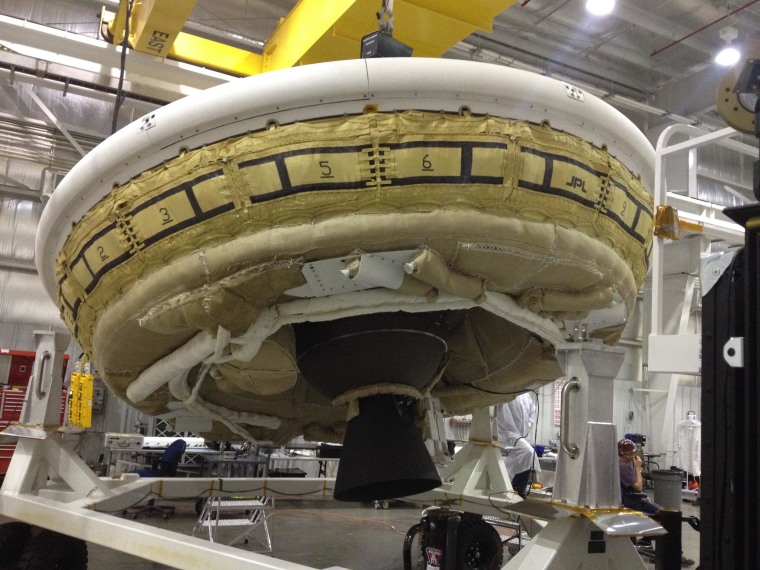The NASA vehicle that looks like a flying saucer and is designed to blaze a trail for future Mars landings will have to stay on the ground in Hawaii for at least two additional days.
The Low-Density Supersonic Decelerator, or LDSD, has to be sent up on a balloon from the U.S. Navy's Pacific Missile Range Facility in Hawaii when the winds are blowing out to sea, so that it splashes down safely into the Pacific Ocean at the end of its high-altitude test.
Weather conditions weren't right for a Thursday launch, NASA said in an advisory.

Unfavorable winds forced a scrub on Tuesday as well. NASA said future launch opportunities are available on June 7, 9, 11 and 14. When the test happens, NASA TV will provide live video coverage.
The test launch serves as an opportunity to see how a new kind of atmospheric braking system performs under conditions similar to those faced during entry, descent and landing on Mars. The 15-foot-wide (4.7-meter-wide) vehicle looks like a flying saucer because that's the shape used for Mars descent spacecraft.
The LDSD would be sent up to an altitude of 120,000 feet using a helium-filled balloon. Then it would drop away and fire a solid-fueled rocket engine to zoom up to 180,000 feet. At that height, Earth's atmospheric density is similar to that of Mars' atmosphere.
As the saucer descends at a supersonic speed of Mach 3.8, a coated Kevlar "inner tube" would inflate, widening the craft's diameter to 20 feet (6 meters). The extra drag should slow the saucer down to Mach 2.5, and then a super-strong 100-foot-wide (30.5-meter-wide) parachute will unfurl to further slow the descent to a gentle drift.
About 45 minutes later, the craft would be recovered from the Pacific for analysis. If the system works, NASA says it could eventually be used on spacecraft that carry multiple-ton payloads to Mars. That would be a significant improvement on the system that was used to get NASA's 1-ton Curiosity rover to the Martian surface in 2012.
To get the latest word on the weather outlook in Hawaii, keep tabs on the LDSD mission's website or follow @NASA_Technology on Twitter.